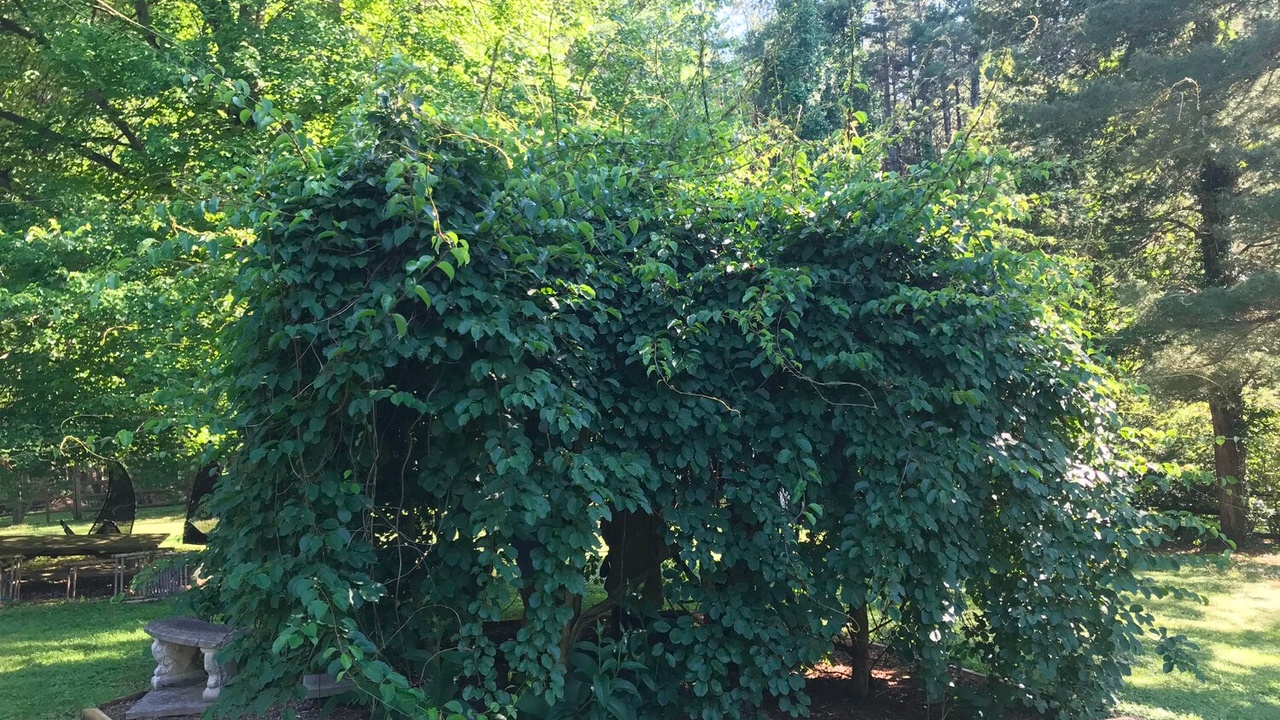
Taylor Logdson, Owner, Loggy’s Edible Landscaping
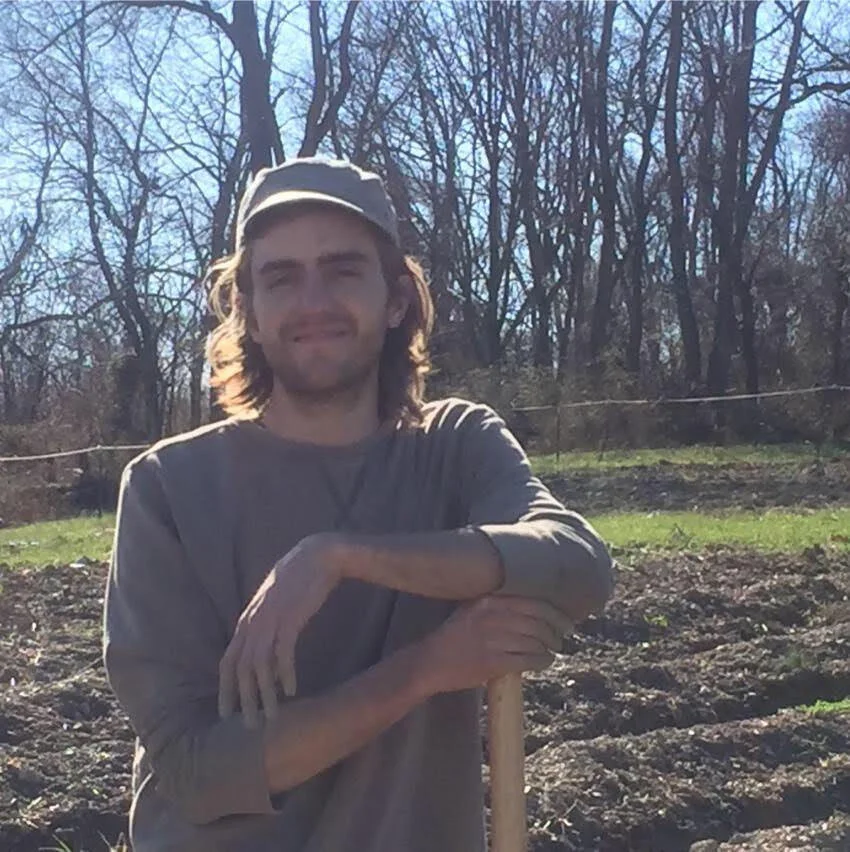
Food forests, also known as forest gardens, are an ancient way of practicing horticulture that has been used by people all around the world for thousands of years. In modern times, the practice and techniques of planting food forests has been revitalized through permaculture, the ethical design system that integrates humans and nature, which was sparked by Bill Mollison in the 1970s.
Food forests mimic natural forests but are planted to specific plant species desired for use by its human caretakers. They include seven layers that create a multi-layered, diverse food growing system, some of which have been continually harvested for thousands of years! In addition to food, other useful plants for fiber, timber and medicine are planted.
So what does this look like in our own backyards?
Each food forest is unique to the place and people it belongs to. Identifying the needs and desires of the human caretakers as well as the unique climatic conditions of the site help us to select the plants to cultivate. Here in the Mid-Atlantic (zones 5-7) we are blessed with a large selection of fruits, nuts, berries and herbs to choose from! Many of these are easy to grow, easy to maintain and totally delicious. These are the plants that I like to work with because I know they will do well whether they receive annual care by an attentive gardener, or are left to fend for themselves.
Let’s walk through the layers of a food forest to explore some of the options for our bio region:
1. CANOPY LAYER: large fruit and nut trees
Up high in the canopy of our forests we have the nut producing giants- many of which are native to our area. These include chestnuts, black walnuts, hickories and pecans and require ample space to reach their full potential. They produce carbohydrates, fats and proteins and can be stored for months, making them a great step towards food security. For many an urban or suburban yard, there is only space for one or two of these trees if any at all.
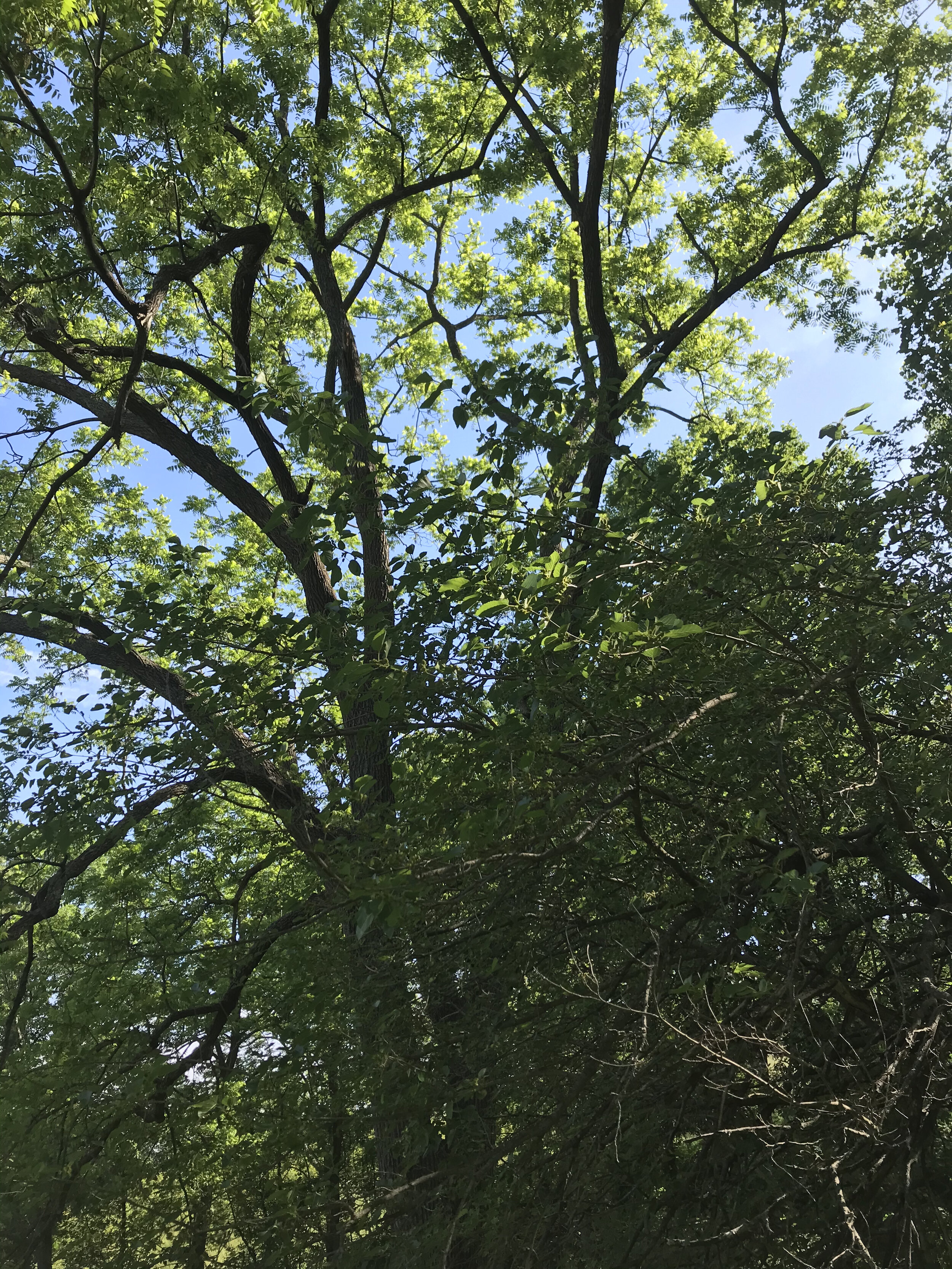
Mulberry growing and fruiting under mature black walnut, Taylor Logsdon
2. UNDERSTORY LAYER : dwarf fruit trees
A little lower down, and the layer than many backyard food forests will start with, we have the sub-canopy ranging about 10-30 ft. Here we have a lot of our fruiting trees- Mulberries, Pawpaws, Asian Pears, and Juneberry to name a few. These trees can be left to reach their full height potential or pruned to a more manageable size. Some of these trees are able to fruit well in part sun, while others require full sun. Mulberry, for example, is able to grow and fruit under the edges of canopy trees quite well. Pawpaws also fruit at the edges of forest canopies though they will produce much more in full sun.
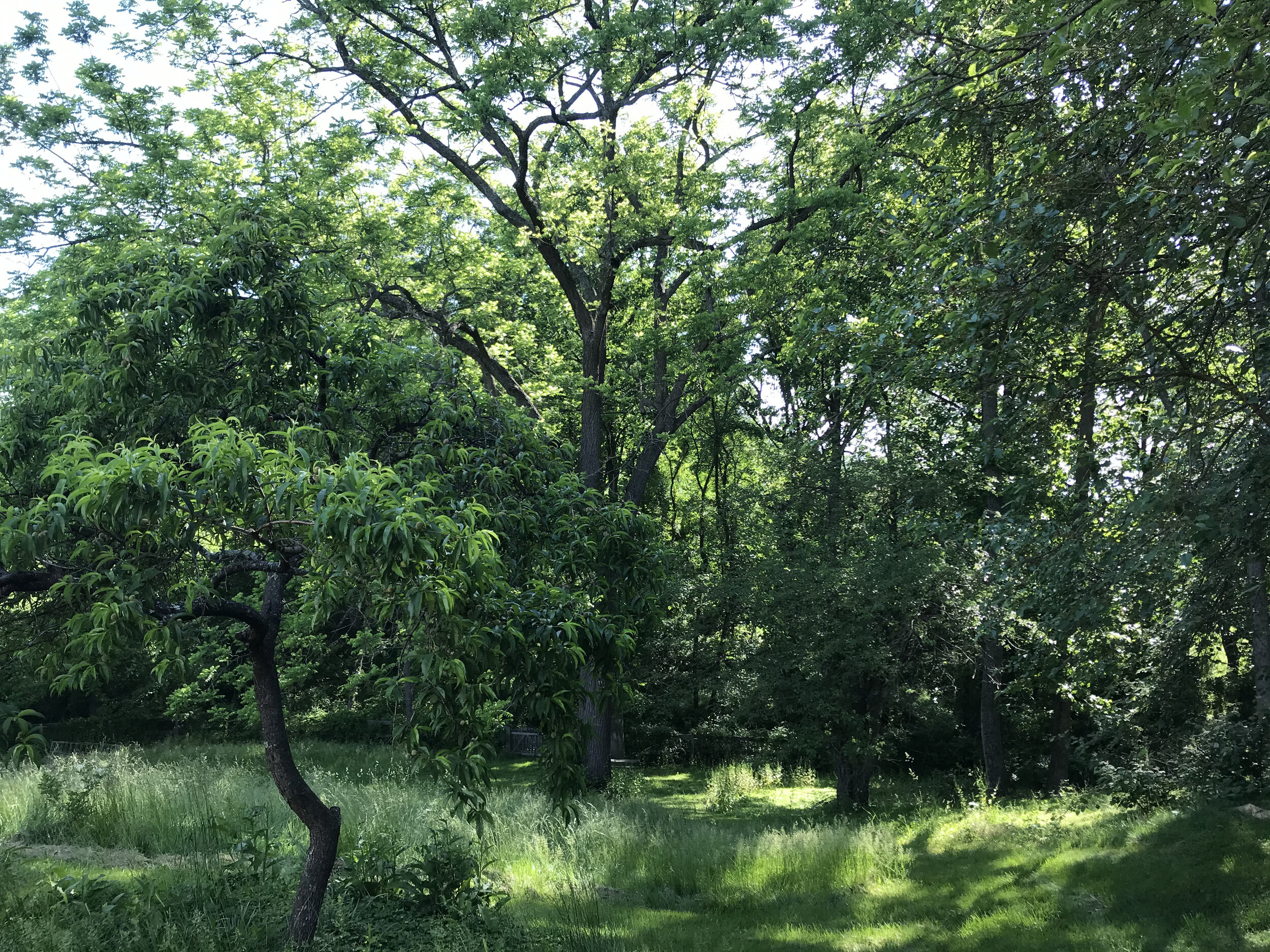
Peach, mulberry and black walnut in backyard, Taylor Logsdon
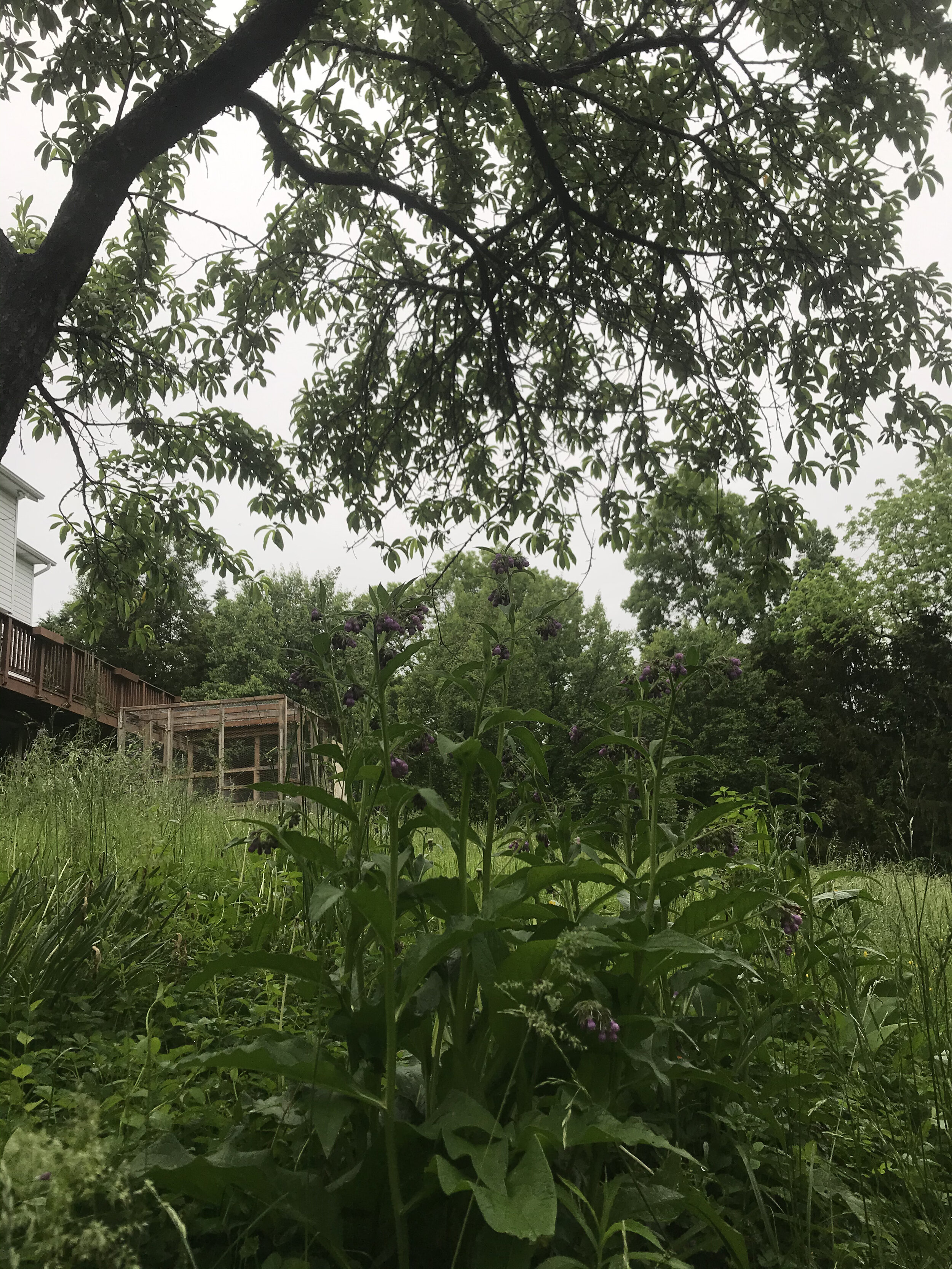
Comfrey under peach tree, Taylor Logsdon
3. SHRUB LAYER
At about eye level we come to the shrub layer. Here we find more fruits, especially berries like Elderberry, Nanking Cherry Gooseberry, currants and blueberries. In addition to our shrubs, we can include the wonderful cane berries in our region - raspberry, wineberry, blackberry and roses, which should be given space to spread out as they grow. For very small yards this may be the layer at which one starts.
4. HERBACEOUS LAYER
Down by our knees and feet we have the ground covers. These include culinary and medical herbs, vegetables and fruit. Mint, Lemon Balm, Bee Balm, Catnip, and Comfrey all make great teas and they also put out flowers that pollinators love. Strawberries and Lingonberries add even more berries. Flowers for beauty and habitat can be planted here to occupy the space until the canopy matures. Perennial vegetables like asparagus, globe artichoke, sunchokes and rhubarb come back year after year. The space can even be used to plant annual vegetables for years while the trees grow above. While a food forest is young this layer will grow and spread quickly to occupy the space in between trees.

Annual vegetables growing along with herbs and fruit trees and
shrubs in young food forest hedge, Taylor Logsdon
5. RHIZOSPHERE LAYER
The roots of all the above plants, will of course, be grow our feet and can also include edible tubers like potatoes, sweet potatoes, ground nuts and lilies.
6. GROUND COVER LAYER
In this photo, we see ground covers like strawberries, Walking Onion and Catnip below the shrub layer in young food forest.

7. CLIMBERS
Finally, we have the vine layer which can climb up fences, arbors, or our food forest trees. Grapes, Hardy Kiwis, Honeysuckle, Maypop and hops fill this opportunistic niche. They can also be used to create summer shade over top of decks, chicken coops and patios.

Hardy kiwi providing shaded sitting area, Taylor Logsdon
No ecosystem would be complete without animals, whether domestic or wild. Chickens, ducks and rabbits can benefit greatly from the yields of the food forest while helping to control weeds, pests and create fertility. Ground feeding birds like Robins, Catbirds and Blue Jays are also likely to lend their services of pest removal and fertilization, though may also eat some of the fruit yields. Wild rodents like rabbits, squirrels, groundhogs and mice can be eaten but most home owners are more likely to want to find ways to exclude them from their gardens. With all domesticated and wild animals care must be taken that they do not cause too much damage and disturbance to our desired plants. This can be done with fencing, animal tractors and tree cages.
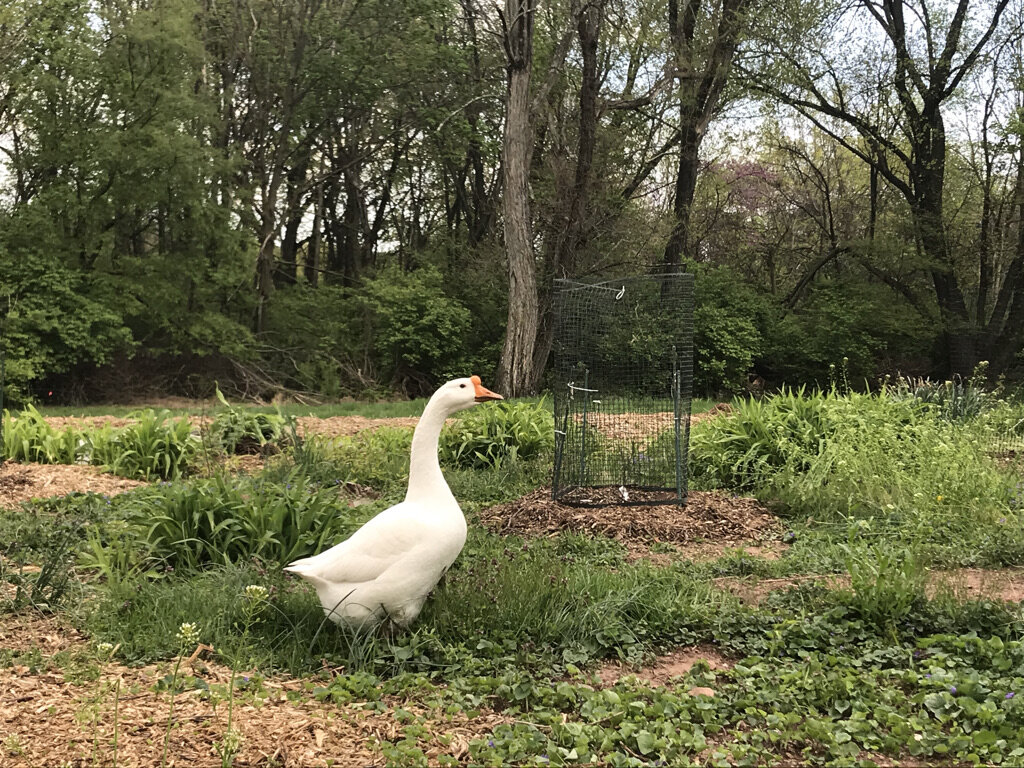
Goose in young food forest, Taylor Logsdon
Feeling totally excited but not sure where to start? Begin with design. This has very much to do with the site conditions and the residents of the land. By considering sun exposure, water management, space requirements and the needs and desires of the people present we determine the plants to use and where to put them.
The result is edible ecological abundance for generations to come!
Here are are a few videos to further inspire your food forest design.


